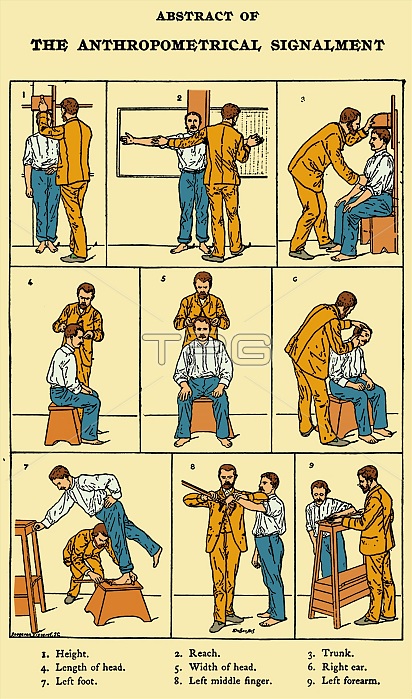
Frontispiece from Bertillon's Identification anthropometrique (1893, published in the USA in 1896), demonstrating the measurements needed for his anthropometric identification system. Alphonse Bertillon (1853-1914) was a French police officer and biometrics researcher who created anthropometry, an identification system based on physical measurements. Anthropometry was the first scientific system used by police to identify criminals. In this system the person was identified by measurement of the head and body, individual markings (tattoos, scars) and personality characteristics. The measurements were made into a formula that would apply to only one person and would not change. The system was eventually found to be flawed, however, because often two different officers made their measurements in slightly different ways and would not obtain the same numbers. Measurements could also change as the criminal aged. It also could identify two individuals as the same person, unlike fingerprinting. The Bertillon card included spaces for descriptions of the prisoner's eyes, ears, lips, beard, hair color, skin color, ethnicity, forehead, nose, build, chin, general contour of head, hair growth pattern, eyebrows, eyeball and orbit, mouth, physiognomic expression, neck, inclination of shoulders, attitude, general demeanor, voice and language, and habiliments (clothing).
| px | px | dpi | = | cm | x | cm | = | MB |
Details
Creative#:
TOP22299470
Source:
達志影像
Authorization Type:
RM
Release Information:
須由TPG 完整授權
Model Release:
N/A
Property Release:
No
Right to Privacy:
No
Same folder images:

 Loading
Loading